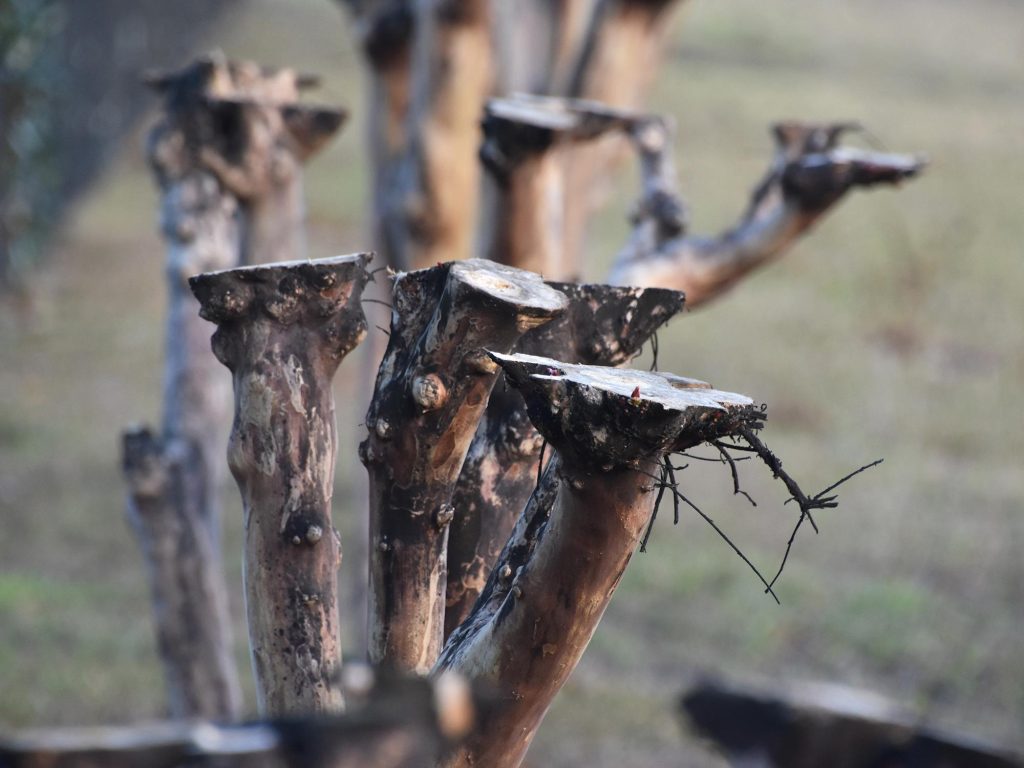
Crape myrtles are incredibly popular in Georgia. They are versatile flowering shrubs/trees that provide an abundance of summer color with minimal maintenance. Their ability to withstand drought, disease resistance, and insect hardiness has earned them a spot in many local landscapes. Crape myrtles grow and flower well under our less-than-desirable soil conditions. They have a wide color variety and come with height ranges of under 3 feet to more than 20 feet.
Unfortunately, folks may plant ornamental trees without enough forethought of how tall they will get or if the structural integrity of their home will be compromised. This can lead to a need for intensive pruning. When someone gives little consideration to the pruning technique and hastily does the job, it typically results in a practice that leads to more harm than good.
Trees should be pruned to improve plant structure and increase airflow around branches. Severe pruning or topping a large portion of the tree’s branches results in new growth of weak shoots not strong enough to support spring blooms. Aggressively cut branches can also struggle to heal and allow the entrance of disease and rot.
The butchering of these beauties is commonly referred to as “crape murder.” Repeated every year, this over-pruning creates gnarled knuckles on the ends of trunks with a thicket of long thin branches drooping like a weeping willow.
Over-pruning is typically a copycat offense. We see what our neighbors have done and figure if it didn’t kill theirs, it must be the right way. Let’s face it, a crape myrtle is about as tough as Clint Eastwood.
You can always cut more off, but you can’t put it back on. So assess each plant individually before making any cuts. Each tree, even within the same species, will have its own unique shape.
Start with removing suckers from the base of the plant and lower branches from the bottom third to expose the trunk if desired. Next, remove any diseased, damaged, or inwardly growing branches. Also, remove branches that overlap or rub each other. If the canopy is extremely crowded, you can thin it with the goal of seeing through it, not over it. It’s not necessary to remove spent seed heads but you can if you prefer the look of them being gone. If removing an entire branch is needed, be careful not to cut into the branch collar.
If you choose to prune crape myrtles, do so in late winter while they are dormant and before spring growth begins. Regardless of the pruning shape or how drastic, crape myrtles still seem to bloom beautifully if pruned at the proper time of year. They also flower if you skip pruning, unlike many woody ornamentals that only flower on new wood.
Just because you see your neighbors lopping the heads off of their crape myrtles this winter, doesn’t mean you have to abuse yours as well. For more information on caring for crape myrtles, refer to the UGA Extension Circular 944 “Crape Myrtle Culture.”